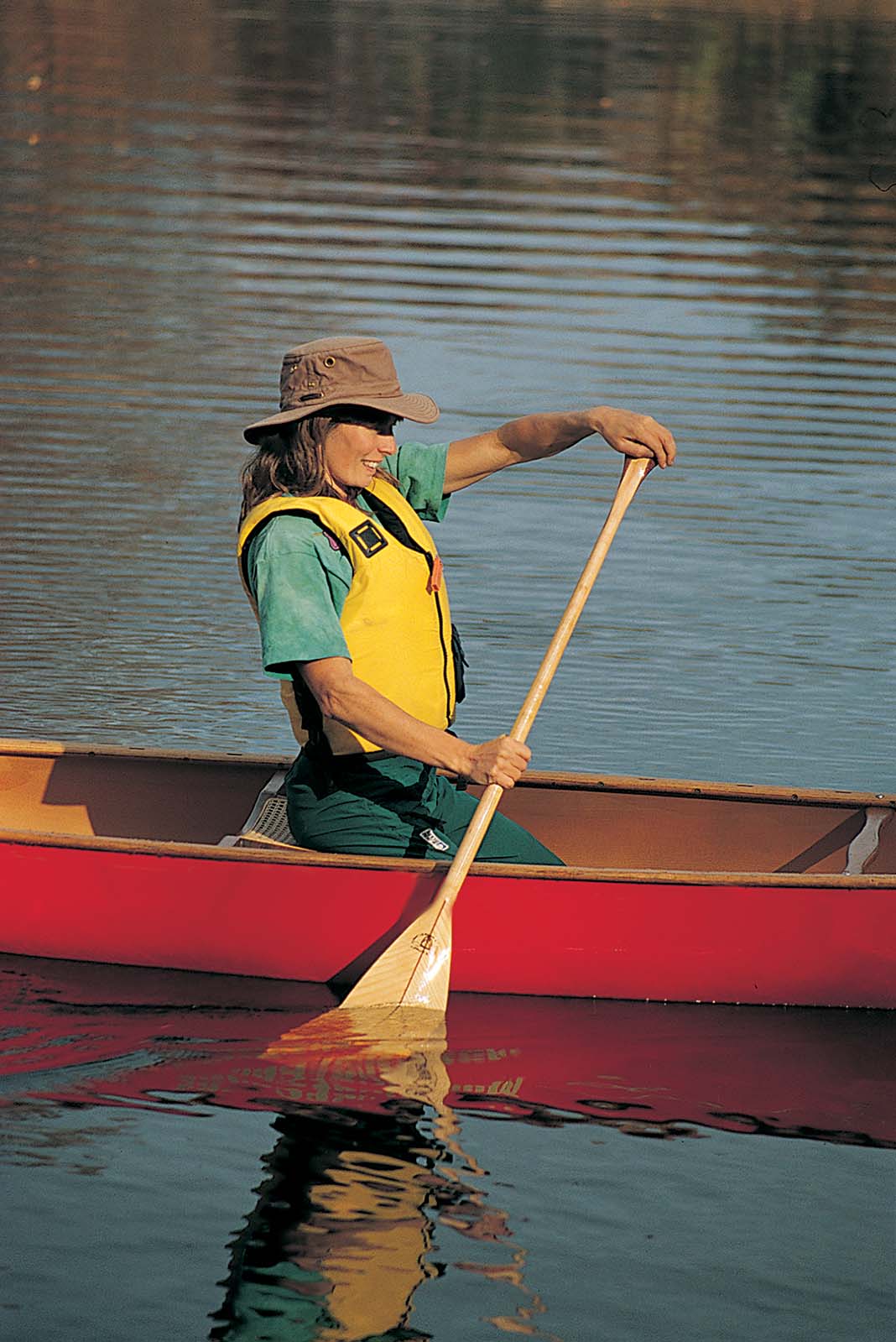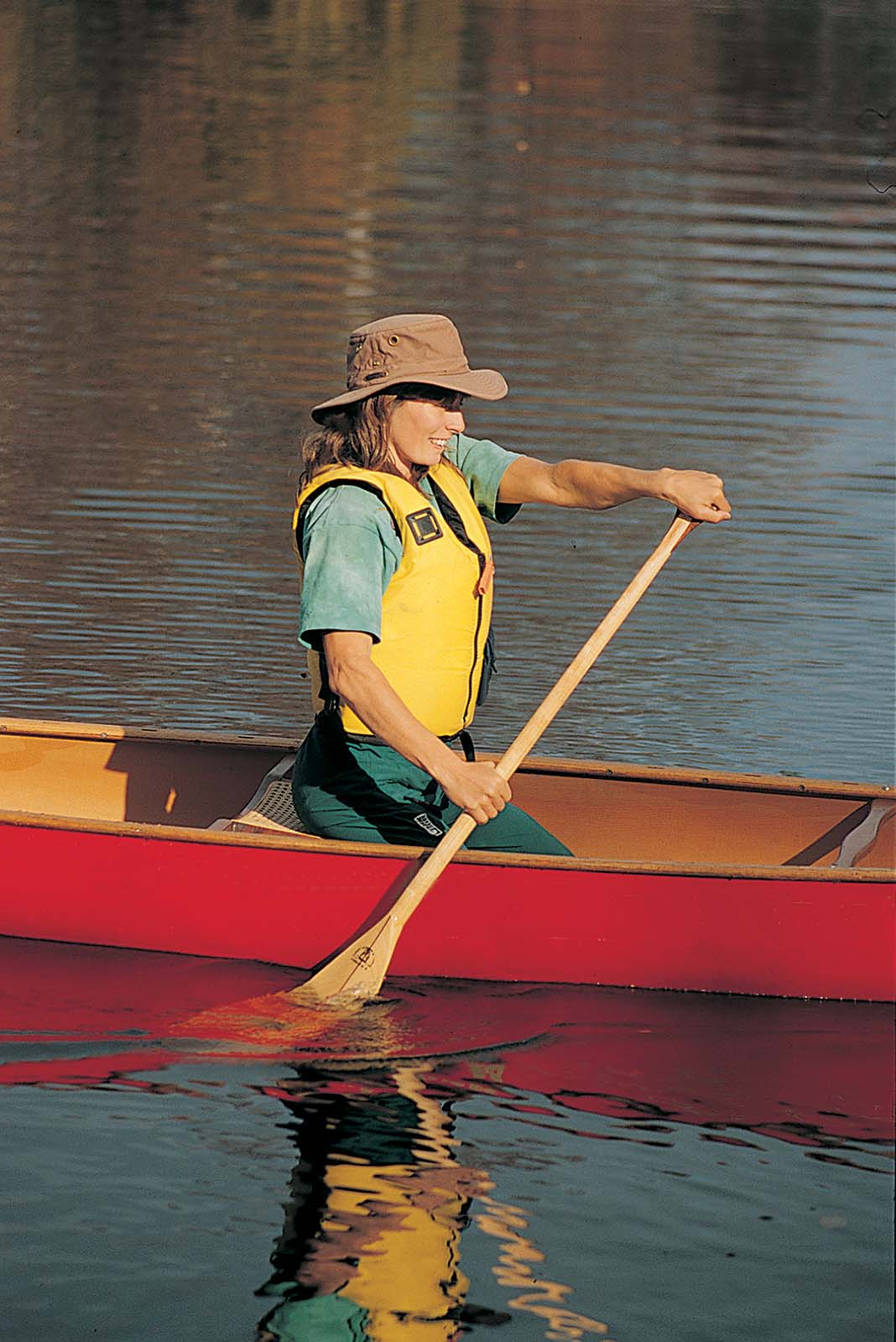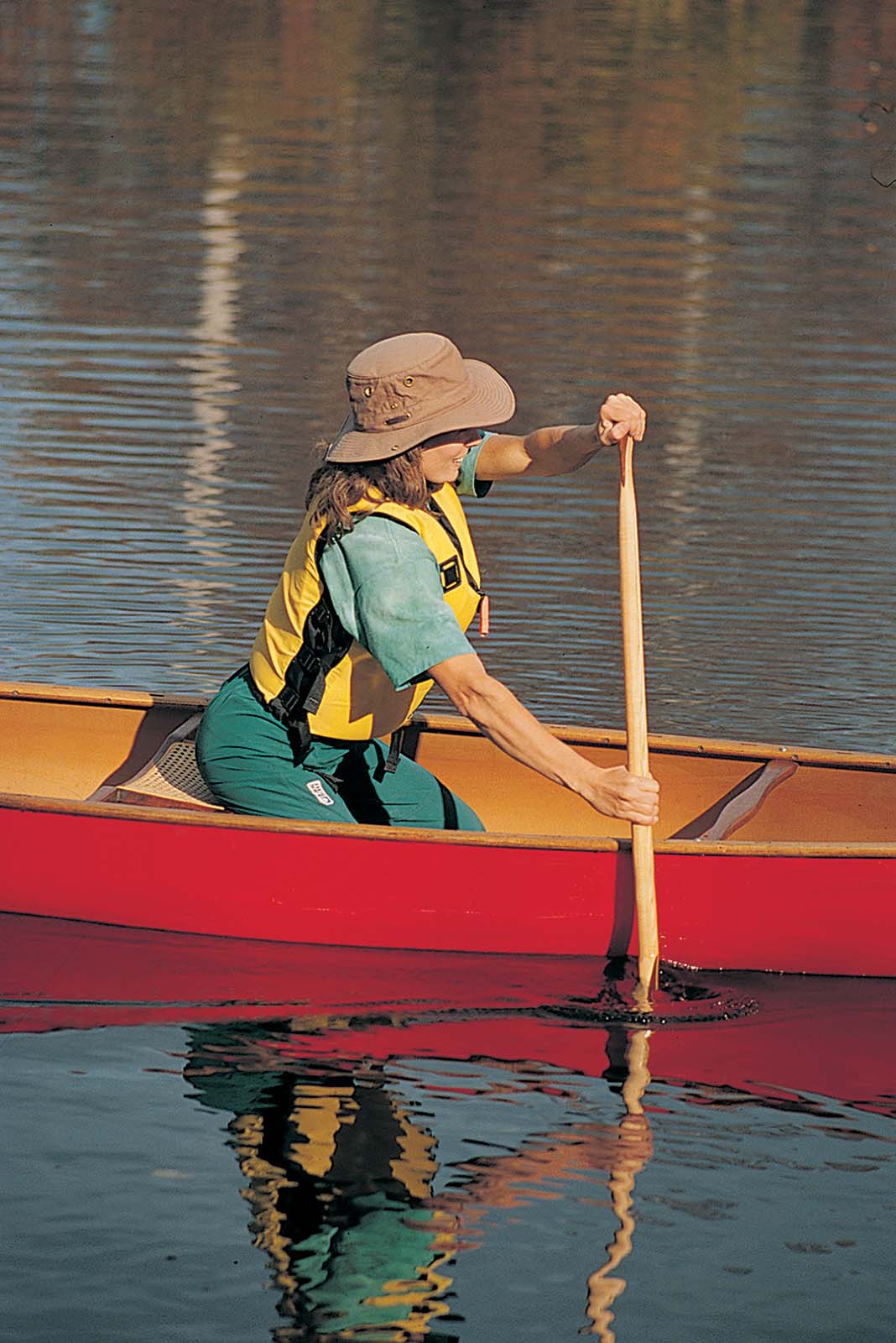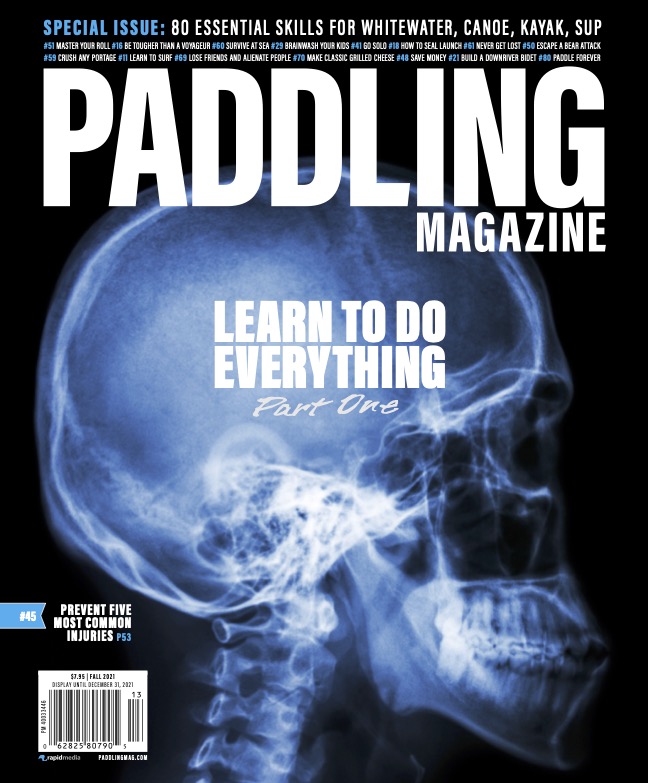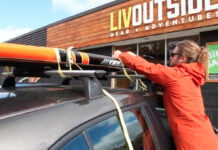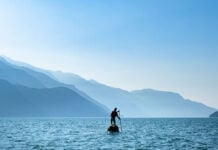The beauty of silent paddling is just that—the silence. You can paddle along a stretch of shoreline at dusk with the only sound of your passing being the small rippling wake slapping the rocks. Every sound of the forest is crystal clear: a creek burbling, the distant hooting of an owl, a frog croaking. Traveling in silence takes practice but the rewards are well worth the effort. Read on and learn how to paddle silently.
How to paddle your canoe silently
Whether you’re sneaking up on a moose for that perfect photo or simply enjoying the sensation of gliding across water soundlessly, silent paddling is a skill every canoeist should master. The good news is, at the heart of every quiet stroke is just good technique. Employ it and you’ll be able to travel farther and faster while conserving your strength—and no one will hear you coming.
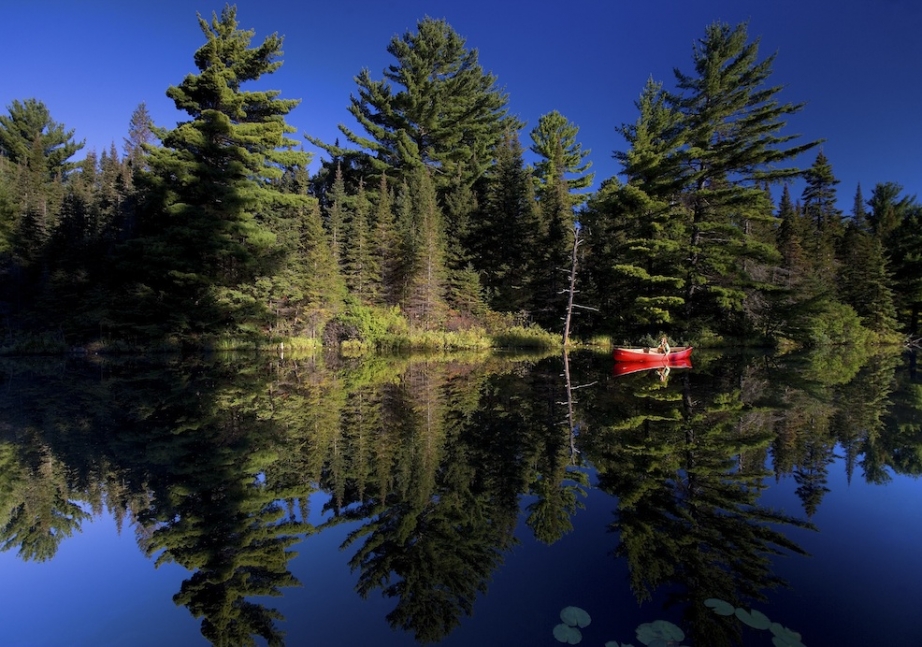
Position yourself properly
Efficiency starts with your body position. Your hands-on the grip and shaft of the paddle should be spaced a bit more than shoulder distance apart. Sit or kneel with your knees anchoring you to the canoe in a solid stance. This achieves balance and it enables you to transfer maximum power through your paddle to the canoe.
Slightly bend and lock your elbows so that your upper torso will have to rotate to plant the paddle, engaging your core muscles. To avoid a noisy splash when you plant your blade in the water, keep the paddle shaft near vertical as it enters—this way, you’ll only hear a whisper.
Submerge your paddle blade
Fully submerging your blade will allow you to paddle without creating a gurgle. Think of the blade as anchored in the water. As you unwind your torso, pull with your shaft arm while pushing with your hand on the grip. Focus on bringing the canoe to your paddle instead of the other way around. As you do this, use your hips to thrust the canoe forward.
Exiting the paddle blade silently from the water requires finesse, and must happen in line with your hip and not behind it. To do this, drop your grip hand slightly while turning that thumb forward, effectively twisting the paddle in the water. Lift your shaft hand so the blade clears the surface, sliding out perpendicular to the water’s surface instead of parallel. Keep those elbows locked. Your arms, torso and paddle must remain as one unit to be efficient. Did you hear anything louder than a whisper?
Practice the perpendicular plant
Reach forward for the catch and plant the blade again—with practice this technique will become smooth.
Perfect this skill and you’ll not only notice the benefit of moving faster with less effort, but you will achieve a true sense of oneness between you, the paddle, the canoe and the water that only silence can bring.
Master the ancient art of the silent stroke
Good paddling form will help you to reduce noise, but the silent stroke can take it one step further. Once mastered, this variation on the J-stroke allows you a quick, quiet passage through the water.
The key to the silent stroke is the recovery. Following the J, the blade is sliced back to the catch position in an underwater recovery. Roll the grip in the palm of your hand so that the backface now becomes the powerface. From stroke to stroke, the blade does not leave the water at all. We break down the steps below.
5 steps to perform the silent stroke
1 The underwater recovery is key
The silent stroke is a forward stroke with an underwater recovery where the powerface alternates on each stroke. Move from one blade face to the other by rolling the grip in the palm of your control hand while the blade is in the recovery position. Slice the blade forward in a complete underwater recovery. As the blade slices back to the catch, the blade’s leading edge turns toward the hull instead of away from it as in a forward stroke.
2 Spin the paddle grip to switch faces
Open your fingers on your control hand to spin the paddle grip in your palm. Now your control thumb points out. The leading edge of the blade turns toward the hull. What was the powerface now becomes the backface.
3 Pull your canoe to the blade
This is the propulsion phase of your forward stroke. Begin with a slight forward lean at the catch, with your upper body rotated toward the offside. Pull your lower body to the blade by sitting up and unwinding your torso.
4 Initiate J, then recover
At the end of the propulsion phase, turn your control thumb forward to initiate the J.
5 Aim for smooth transitions
The smooth transitions between powerfaces and the silence of the stroke comes from the blade never completely breaking the surface of the water. The silent stroke involves very subtle blade control.
This article originally appeared in Canoeroots and Family Camping, Spring 2014 and in Paddling Magazine Issue 65. Subscribe to Paddling Magazine’s print and digital editions here, or download the Paddling Magazine app and browse the digital archives here.
Paddle silently through the stillness at Smoothwater Lake Provincial Park. | Feature photo: Gary McGuffin


